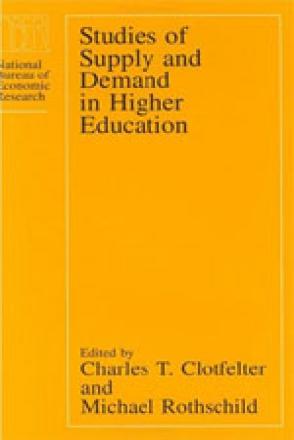Studies of Supply and Demand in Higher Education

In the United States today, there are some 3,400 separately governed colleges and universities, amounting to a higher education industry with expenditures that constitute 2.8% of the gross national product. Yet, the economic issues affecting this industry have been paid relatively little attention. In this collection of eight essays, experts in economics and education bring economic analysis to bear on such underexamined topics as the nature of competition in higher education, higher education’s use of resources, and who chooses to purchase what kind of education and why.
In higher education, supply refers to such issues as government support for public colleges and universities, the means by which graduate programs allocate financial support to students, and the criteria that universities use for investing endowments. Demand pertains to patterns of student enrollment and to the government, business, and individual market for the service and research activities of higher education.
Why are tuitions nearly the same among schools despite differences in prestige? How are institutions with small endowments able to compete successfully with institutions that have huge endowments? How are race and ethnicity reflected in enrollment trends? Where do the best students go? What choices among colleges do young people from low-income backgrounds face? This volume addresses these questions and suggests subjects for further study of the economics of higher education.


